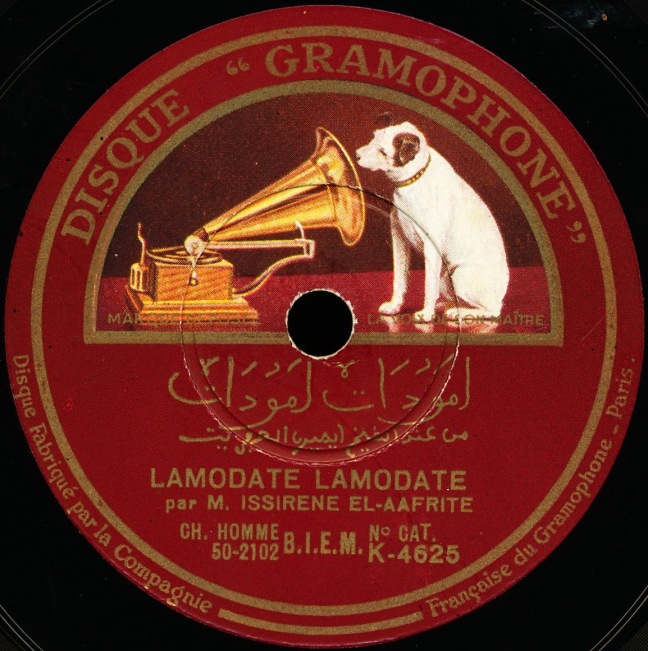Until 2019, we knew little about Algeria’s first female stage actor Marie Soussan (1895-1977). Then Ouail Labassi, a historian of early twentieth century Algerian music and a friend of Gharamophone, published his groundbreaking research on the comedienne and recording artist here. Much of what follows, then, is mere summary of his work (with permission). Readers should also note that I build on the pioneering scholarship of Hadj Miliani. Where possible, I have added some additional details culled from my own findings.
Soussan was born on January 17, 1895 in the lower Casbah of Algiers. As Labassi has shown, her mother Louna Aboucaya was the maternal aunt of impresario Edmond Nathan Yafil. Like so many artists of her era, she honed her musical skills at family gatherings, where she devoted herself to singing and the darbuka. At some point after World War I, she joined El Moutribia, the orchestra and theater troupe of her famous cousin Yafil. According to Labassi, her stage debut may have occurred in 1925 at the Casino d’Alger. Over the next fifteen years, she maintained a busy career with El Moutribia, acting and touring alongside her comic partner Rachid Ksentini. Together, the Jewish-Muslim duo took center stage. Many of those acts were then recorded to disc. Soussan, of course, was also a talented solo artist, recording an array of genres––classical and popular––first with Gramophone and then with Polyphon. All of this earned her early membership in the Société des auteurs, compositeurs et éditeurs de musique (SACEM).
This record, “Alach ya Lsan tadoui,” an original composition by a yet identified musician, was made for Polyphon in 1934, a rather productive year for the label in North Africa. As can be heard, there is a strength and a sultriness to her voice. Perhaps that is why, in part, the French press of the time referred to Marie Soussan as “the Sophie Tucker of North Africa.”
Notes
Label: Polyphon
Title: Alach ya Lsan tadoui [علاش يا لسان تدوي]
Artist: Marie Soussan
Issue Number: 45.803
Matrix Number: 237 HRP; 238 HRP
Date of Pressing: 1934


